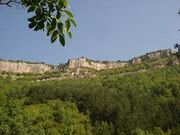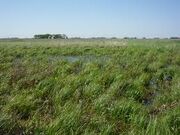Motto | |||||
| Anthem | "At your call, Talmoria" | ||||
| Capital (and largest city) |
Neuhaus | ||||
| Language official |
Asli language, Tukarese | ||||
| others | Fasokan, Keobi, Orun, Ganar | ||||
| Religion main |
65% Ahmadi •63%Israi •1% Abadi | ||||
| others | 10% Geraja 10% Hosian •7% Luthoran •3% Aurorian 5% Asli Traditional religion 5% Daenism 5% Other religion | ||||
| Ethnic Groups main |
70% Asli | ||||
| others | 10% Kalkali 5% Gao-Showan •3% Indralan •1% Phra •0.5% Dzegran •0.5% Kunihito 5% Hulstrian | ||||
| Demonym | Talmorian | ||||
| Government | Constitutional Monarchy | ||||
| Empress Esintsundu and Queen Represented by the elected |
Aminatu Saksoure IX | ||||
| Chief of Government | Alasan Singhateh | ||||
| Legislature | Parliament | ||||
| Area | 947,403 km² | ||||
| Population | 99,777,745 (4351) | ||||
| GDP | 272,900,000 TAL (4351) | ||||
| Currency | Talmorian Schmeckle (TAL) | ||||
| Time Zone | GMT +9 | ||||
| summer | GMT +10 | ||||
| Drives on the | Right | ||||
| Calling Code | +58 | ||||
| Internet TLD | .tl | ||||
| Organizations | World Congress The Neuhaus Pact | ||||
Talmoria , officially Kingdom of Talmoria and also Esinsundu Empire, Talmoria (the official name of the country as part of the Esinsundu Empire), is the last one of the once three constituent kingdoms of the Esinsundu Empire. It is situated on the western coast of Dovani. The nation is bordered to the north and west by Statrica, to the southeast by Utembo, and to the south by former colonies of Luthori.
Talmoria is very diverse, and is home to many ethnic groups and religions, it has often been dominated by other powers throughout its history, even after it gained independence from Ikradon. Talmoria is one of the least developed nations on Terra but has made great leaps in recent years. Aside from foreign domination, Talmoria has struggled with political instability, military regimes, and corruption.
Etymology
The country of "Talmoria" is named after the Ameliorate missionary Jacobus Talmor, who is considered to be the father of the nation. After Talmoria gained independence the new country needed a new name. Talmoria was chosen to honor Jacobus Talmor's role in establishing the Orange Colony which eventually evolved into the modern state.
Of course the native Asli population continued to refer to the land as "Asli Jamana" or Asli country. Although by the 17th century they too began calling it Talmoria.
History
Geography & Climate
At 938,300 km², Talmoria is the Dovani's smallest country. It lies under Rasten Mountains Range at west, Huotet Plateau on north and above Gulf St. Sebastian on south.

The Huotet Plateau
Talmoria is mountainous in the north part from west to east, where Mount Patorale, Talmoria's highest peak, is situated. To the south and east are the Great Lakes of, respectively, Lake Maumba and Lake Tamanzuke (the continent's deepest lake, known for its unique species of fish). South-east Talmoria Basin comprises a large plateau, with plains and arable land. The southern shore is hot and humid. There are also many scattered desserts.

Hanzen Basin in Harisham
Talmoria contains many large and ecologically significant wildlife parks. The government of Talmoria through its department of tourism has embarked on a campaign to promote the St. Peter water falls in the southwestern region of Polsden as one of Talmoria's main tourist destinations. The St. Peter Falls are the second highest in Dovani.
Climate
Talmoria has a oceanic climate. In the highlands, temperatures range between -10 and 15 °C during cold and hot seasons respectively. The rest of the country has temperatures rarely falling lower than 10 °C. The hottest period extends between May and September (28–37 °C) while the coldest period occurs between November and January (8–11 °C /). The climate is cool in high mountainous regions. Talmoria has two major rainfall regions. One is uni-modal (December–February) and the other is bi-modal (October–December and March–May). The former is experienced in south-central, and south-east parts of the country, and the latter is found to the north-east and north-west. As this country lies near the equator, the climate is hot and humid. The easterlies winds cause rainfall in the southern coastal region.
Government & Politics
See also: Politics of Talmoria
Talmoria is an constitutional monarchy with a directly elected head of governments (called Chief of Government) who officially represents the King of Talmoria, whose crown is entitled to the Esintsundu Emperor which imperial crown in turn is vested in the head of state of Hawu Mumenhes, the Pharaoh.
The legislative power is vested in the Parliament. The duties and powers of each government branch are outlined in the Constitution of Talmoria.
Executive
Chiefs of Talmoria

Bamu Palace in Lesako was the original meeting place of the Gbara, but fell out of use when the capital was moved.
The Chief of Government is head of government and the effective head of state when the Monarch of Talmoria is absent from the nation.
Legislature
The 255 member unicameral legislature, as mentioned, is the Parliament. It is comprised of elected representatives from different classes - nobles, griots, commoners and other groups. It proposes, considers, and passes all legislation. It is common for distinguished members of the Assembly to become a Minister on the Council of Ministers.
Judiciary

The assembly place of the Senate. The grandest and largest palace in the country.
The Kingdom has a three-tiered judicial system, made up of the Imperial Supreme Court, Provincial courts, and Municipal courts. The Royal Judiciary Court rules on matters regarding the Constitution. In addition there are misdemeanor courts, commercial courts and administrative courts. Law enforcement in Kingdom is the responsibility of the Royal Police Force, which is under the control of the Farinate of Interior, Local Authorities and Immigration. In addition to the courts, cases may be resolved by a "Trial of Wicked Blades" though this has largely fallen out of favor.
Administrative Divisions

Map of Talmoria with the five Provinces
Talmoria is divided into five Dyamani(Provinces), four on the coast of St. Sebastian Gulf and one in middle of Talmoria. The Dyamani are merely administrative divisions and they serve mostly ceremonial purposes, having been stripped of almost all their powers. The Governors of the Dyamani are selected by the Prime Minister, approved by the Senate, and formally appointed by the monarch. The Dyamamni are further divided into 114 counties, each of them governed by a city, rural, municipal or town council.


